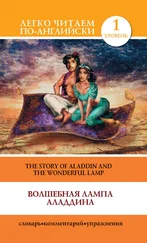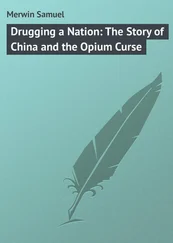Edmund Gardner - The Story of Siena and San Gimignano
Здесь есть возможность читать онлайн «Edmund Gardner - The Story of Siena and San Gimignano» — ознакомительный отрывок электронной книги совершенно бесплатно, а после прочтения отрывка купить полную версию. В некоторых случаях можно слушать аудио, скачать через торрент в формате fb2 и присутствует краткое содержание. Жанр: foreign_antique, foreign_prose, на английском языке. Описание произведения, (предисловие) а так же отзывы посетителей доступны на портале библиотеки ЛибКат.
- Название:The Story of Siena and San Gimignano
- Автор:
- Жанр:
- Год:неизвестен
- ISBN:нет данных
- Рейтинг книги:3 / 5. Голосов: 1
-
Избранное:Добавить в избранное
- Отзывы:
-
Ваша оценка:
- 60
- 1
- 2
- 3
- 4
- 5
The Story of Siena and San Gimignano: краткое содержание, описание и аннотация
Предлагаем к чтению аннотацию, описание, краткое содержание или предисловие (зависит от того, что написал сам автор книги «The Story of Siena and San Gimignano»). Если вы не нашли необходимую информацию о книге — напишите в комментариях, мы постараемся отыскать её.
The Story of Siena and San Gimignano — читать онлайн ознакомительный отрывок
Ниже представлен текст книги, разбитый по страницам. Система сохранения места последней прочитанной страницы, позволяет с удобством читать онлайн бесплатно книгу «The Story of Siena and San Gimignano», без необходимости каждый раз заново искать на чём Вы остановились. Поставьте закладку, и сможете в любой момент перейти на страницу, на которой закончили чтение.
Интервал:
Закладка:
We should visit the battle-field to-day, for the walk or drive is one of the pleasantest in the neighbourhood of Siena. About four miles beyond the Porta Pispini we cross the Bozzone, and then, to the left, ascend the long, low hill of Monteropoli. This was the Sienese position before the battle. Opposite is Monteselvoli, and at our feet the Arbia, and between the two long hills the valley. The contadini take an uncanny pleasure in showing us the way, in pointing out and naming the various sites that witnessed the struggle. Away to the left, above the Malena – nearly an hour’s walk from the small railway station of Arbia – is the spot where the battle ended. A steep little hill, the lower part of which is a vineyard, is crowned with olive trees and cypresses, surrounding a pyramid of rough brown stone. The view that it commands is grand and sweeping; the black and barren hills to the south east; Santafiore hid in clouds to the south; and westwards the blood-stained valley of the battle-field, beyond which rises Siena itself with its towers, behind which the sun was already sinking when the Florentines made their last stand.
From the tower of the Marescotti (now of the Palazzo Saracini), Cerreto Ceccolini had watched the whole fight, beating his drum in signal to the people in the streets below, telling them of the course of the struggle, bidding them cry to God and the Madonna while the event hung in doubt, to shout in exultation when the day was won.
The victorious army rested that night on Monteropoli, with their prisoners and booty. They made their solemn entry into Siena the next day by the same gate through which they had passed out to the war, the German nobles and soldiers crowned with garlands of olive, singing songs in their own tongue as they made their way in triumphant procession to the Duomo. Three days of general supplication and thanksgiving followed; to the title Sena vetus was added by solemn decree Civitas Virginis , to the litany an Advocata Senensium . According to Malavolti, not more than 600 Sienese had fallen on the field of battle, but among them were many young men of the noblest families in the city. It is needless to re-tell in this place the familiar story of the triumphant entry of the Count Giordano with the Ghibelline exiles and his German mercenaries into the desolate Florence, and how that short-lived despotism was set up which the people themselves – those strenuous burghers and artisans of the Florentine Guilds – overthrew six years later. Montalcino, the original cause of the war, had surrendered to Siena a few days after the battle, and had been cruelly humiliated. According to the Sienese chroniclers, the people of Montalcino came through the Porta Romana in penitential robes, with halters round their necks, crying misericordia , and were forced to go to the field of battle to bury all the abandoned dead. A similar fate befell Montepulciano, which Manfred granted to the Commune of Siena on November 20th. In the following year Provenzano was made Podestà of Montepulciano, and with him went Don Ugo, the Camarlingo di Biccherna, to arrange for the building of a fortress there.
But this epoch of Ghibelline prepotency in Tuscany was brief. The victory of Charles of Anjou over Manfred at Benevento, in February 1266, was followed by the restoration of the Guelf supremacy in Florence. Siena and Pisa now stood alone.
Siena had not long remained united. There was still a Guelf faction within the walls, headed by the Tolomei, and the nobles were daily growing more estranged from the people. There was fighting in the Piazza Tolomei in 1265, when the people fired the palace; and again, in 1267, when, after the fall of Manfred, the Guelfs commenced to raise their heads anew. It was in these years that Provenzano Salvani became the ruling spirit of the State, and, in Dante’s words, “in his presumption thought to bring all Siena into his own hands.” It was mainly through his influence that Siena joined with Pisa in aiding Corradino, the youthful grandson of the great Frederick, in his designs upon Italy. Corradino came, a victim marked for the slaughter; and in August 1268 he rode into Siena with his army, and was received with the utmost joy as true Caesar. It was during his stay here that his troops, united with the Sienese, gained a slight victory in the Valdarno, and the prisoners brought into the city seemed to the exulting Ghibellines an augury of the complete triumph of the imperial cause. In the utter overthrow of these aspirations on the disastrous field of Tagliacozzo, “where without arms the old Alardo conquered,” a friend of Provenzano’s had fallen into the hands of the Angevin victor, who set a heavy ransom as the price of his life. Then was it that Provenzano appeared in the guise of a supplicant in the Campo, as Dante tells us in the Purgatorio , begging money of all that passed by, till the sum was made up “to deliver his friend from the torment that he was suffering in Charles’ prison.”
In the very next year a more bitter fate was Provenzano’s own. With Florentine aid, the Guelf exiles were threatening the Sienese frontier, and Provenzano Salvani, with Count Guido Novello, led a mixed force of Tuscan Ghibellines and Spanish and German mercenaries to attack Colle di Val d’Elsa. Here, in June 1269, they were surprised by a smaller force of French cavalry under Guy de Montfort, “routed and rolled back in the bitter paces of flight,” the Florentines and Guelf exiles taking ample vengeance for the slaughter of Montaperti. More than a thousand Sienese fell. Provenzano himself, to whom before the battle it had been foretold that his head should be the highest in the field, was taken prisoner, and murdered in cold blood by Cavolino Tolomei, who rode through the host with his head upon the point of his lance. Among the Guelf exiles in Colle was a noble lady named Sapia – the wife, it is said, of Ghinibaldo Saracini – who waited in agonised suspense in a tower near the field, declaring that she would hurl herself down from the window if her countrymen were victorious. When she saw them routed, and watched the furious Guelf pursuit, she broke out into the paroxysm of delight recorded by Dante, “crying to God, Henceforth I fear thee no more.” 8 8 Purg. xiii. 115-123.
The battle of Colle di Val d’Elsa closes the period of Ghibelline supremacy in Siena. In the following year Guy de Montfort, as vicar of King Charles, forced the Sienese to take back their Guelf exiles, who soon drove out the Ghibellines. Instead of the Twenty-four, the chief power was now vested in a Thirty-six, who included both nobles and popolani . The long struggle with Florence was over for the present, Siena being forced to join her rival in the Guelf League under the suzerainty of the Angevin king. And as was inevitable when the Guelfs got the upper hand in an Italian state, in 1280 the nobles, or gentiluomini , were excluded from the Government, which was now put into the hands of the “Fifteen Governors and Defenders of the Commune and People of Siena.” A daring, but unsuccessful attempt of the Ghibelline exiles and their adherents within the walls to recapture the city in 1281 only resulted in strengthening the new democratic government. In 1285 the Fifteen were reduced to Nine, the famous magistracy of the Signori Nove , “the Lords Nine, the Defenders of the Commune and People of the city and district of Siena, and of the jurisdiction of the same,” in which no members of noble houses could sit (though still eligible for the other offices of the State, such as those of the Provveditori di Biccherna). Their term of office was two months, during which they lived at the expense of the State in one or other of the palaces of the city, rented for the purpose, until the present Palazzo Pubblico was built. The Nine were chosen from the popolo di mezzo , the rich and enlightened merchant class, that came between the nobles and the plebeians. Throughout the story of Siena we find the word Monte used to denote the faction or order that held sway, and this was the beginning of the Monte dei Nove , whose adherents were afterwards known as the Noveschi . The order that had previously held the supremacy is henceforth known as the Monte de’ Gentiluomini .
Читать дальшеИнтервал:
Закладка:
Похожие книги на «The Story of Siena and San Gimignano»
Представляем Вашему вниманию похожие книги на «The Story of Siena and San Gimignano» списком для выбора. Мы отобрали схожую по названию и смыслу литературу в надежде предоставить читателям больше вариантов отыскать новые, интересные, ещё непрочитанные произведения.
Обсуждение, отзывы о книге «The Story of Siena and San Gimignano» и просто собственные мнения читателей. Оставьте ваши комментарии, напишите, что Вы думаете о произведении, его смысле или главных героях. Укажите что конкретно понравилось, а что нет, и почему Вы так считаете.












